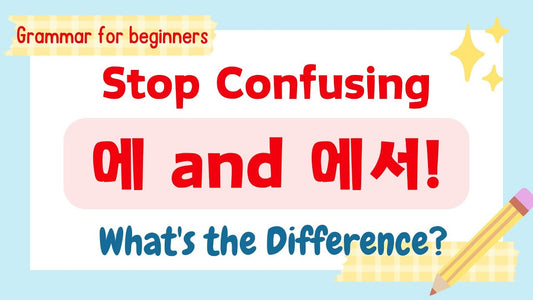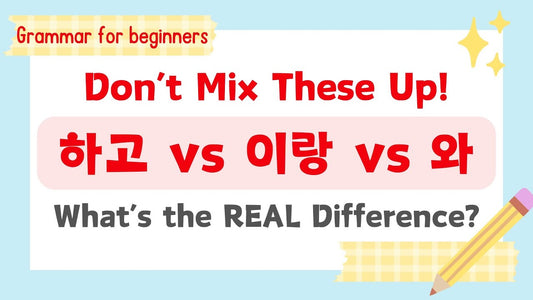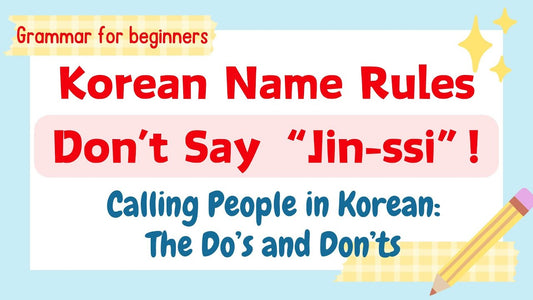Your First Grammar

Stop Misusing 에 vs 에서: Simple Guide for Beginne...
This blog explains the key differences between the Korean particles 에 and 에서—where 에 marks location or time (static existence or destination) and 에서 indicates the place of action or...
Stop Misusing 에 vs 에서: Simple Guide for Beginne...
This blog explains the key differences between the Korean particles 에 and 에서—where 에 marks location or time (static existence or destination) and 에서 indicates the place of action or...

How to Say “AND” & “WITH” in Korean: 이랑/랑, 하고, ...
This blog explains how to say “and” or “with” in Korean using three common connectors: 이랑/랑, 하고, and 와/과. You’ll learn which one to use in casual, neutral, and formal...
How to Say “AND” & “WITH” in Korean: 이랑/랑, 하고, ...
This blog explains how to say “and” or “with” in Korean using three common connectors: 이랑/랑, 하고, and 와/과. You’ll learn which one to use in casual, neutral, and formal...

The Secret to Sounding Polite in Korean: It’s J...
Mastering one simple word can dramatically improve how polite you sound in Korean. In today’s video, we reveal that one secret particle—and show you exactly how to use it in...
The Secret to Sounding Polite in Korean: It’s J...
Mastering one simple word can dramatically improve how polite you sound in Korean. In today’s video, we reveal that one secret particle—and show you exactly how to use it in...

How to Address Korean Idols: Oppa, -ssi, -nim –...
In this helpful guide, you’ll discover how to properly address Korean idols using honorifics like “Oppa,” “-ssi,” and “-nim.” The video covers: ✅ Meaning and usage contexts of each term...
How to Address Korean Idols: Oppa, -ssi, -nim –...
In this helpful guide, you’ll discover how to properly address Korean idols using honorifics like “Oppa,” “-ssi,” and “-nim.” The video covers: ✅ Meaning and usage contexts of each term...